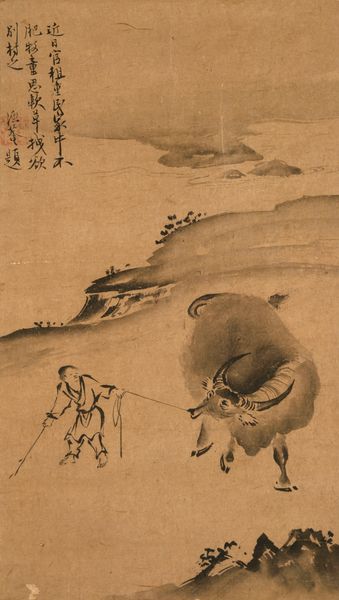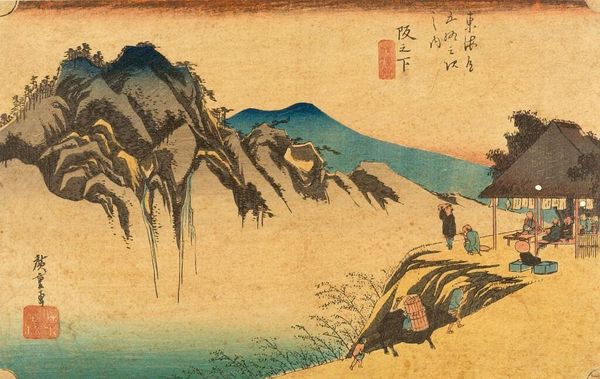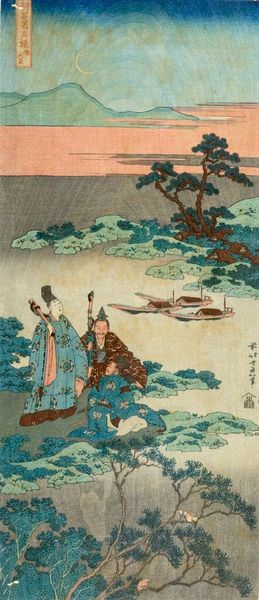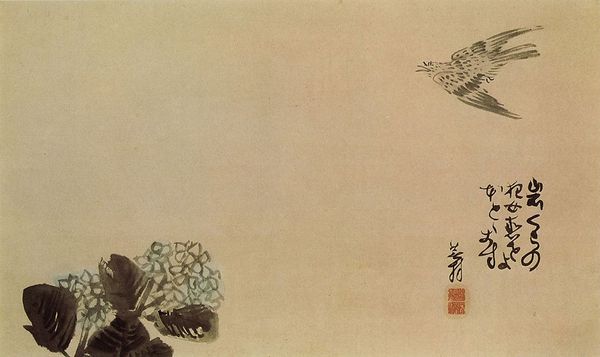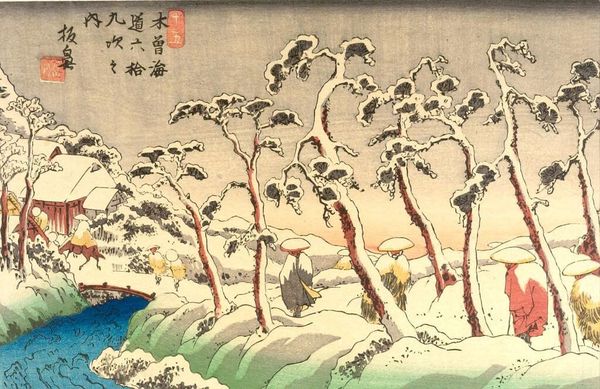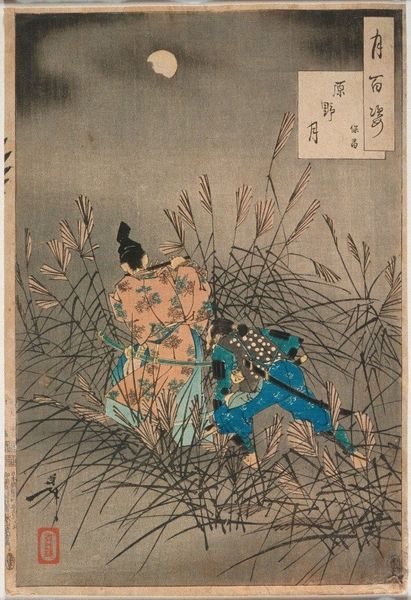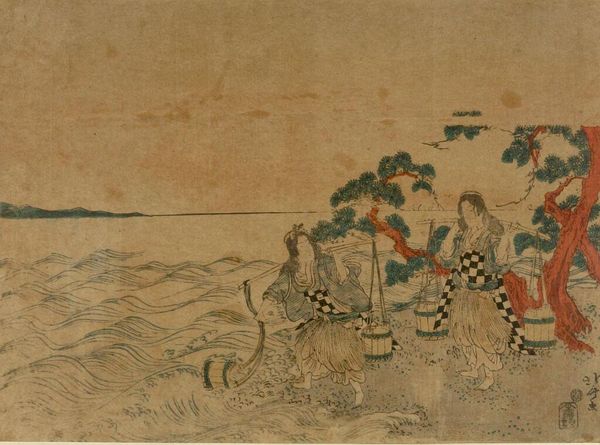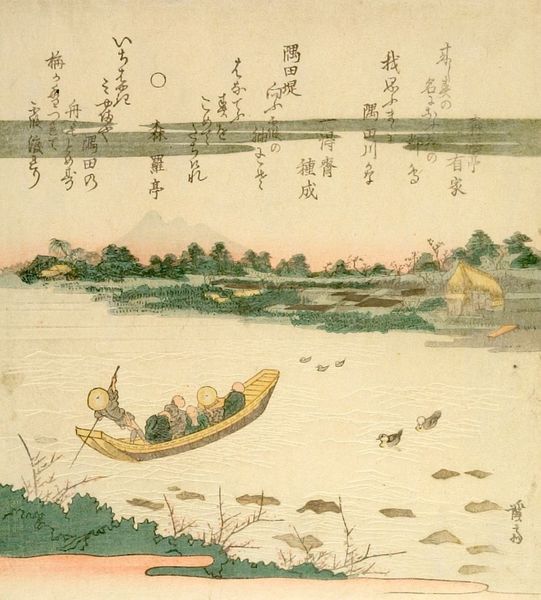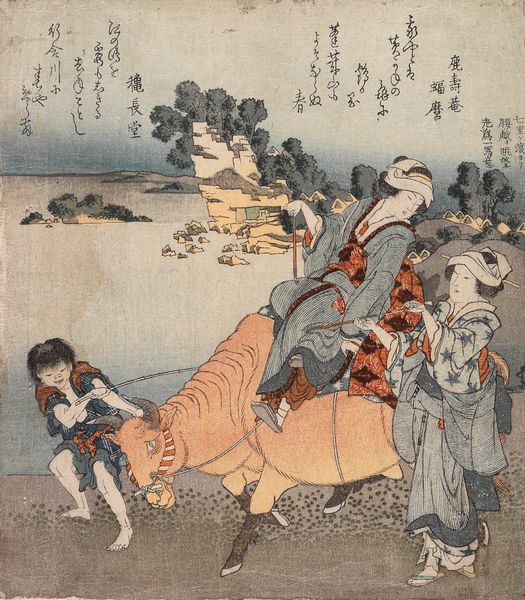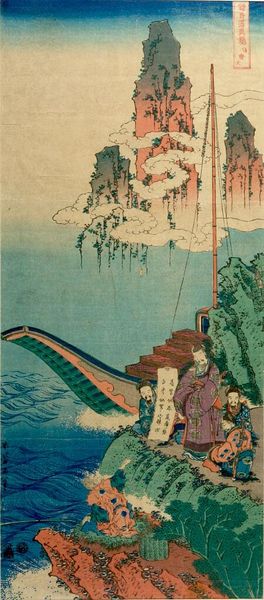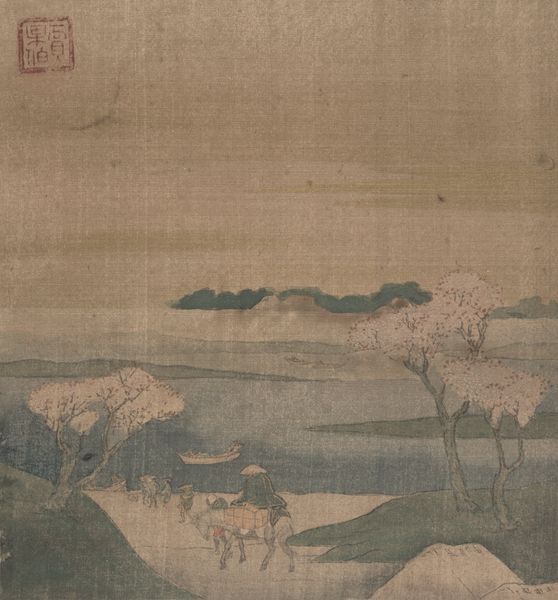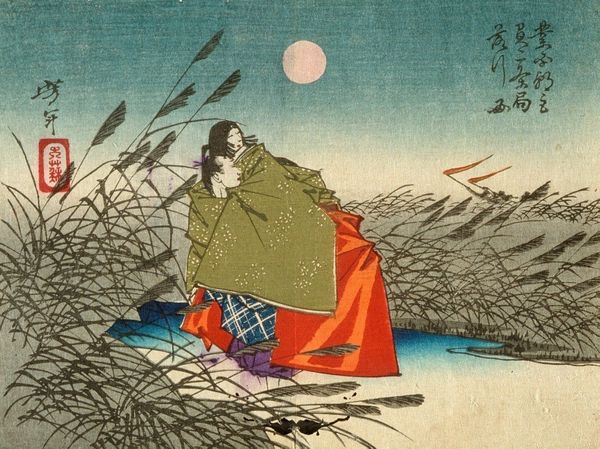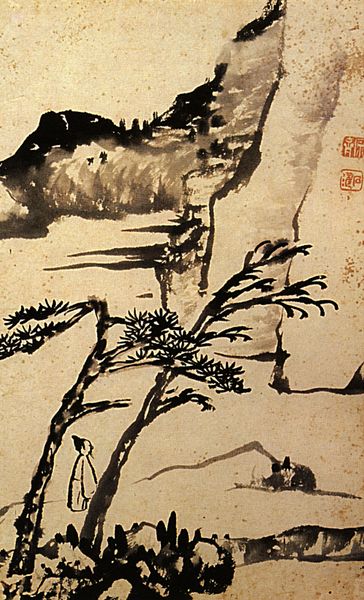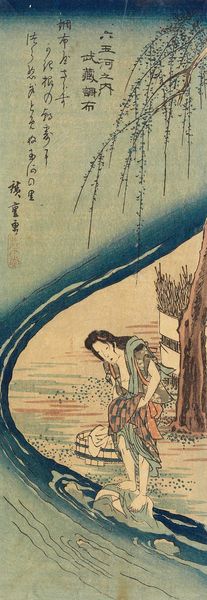
Dimensions: 14 3/4 × 5 in. (37.4 × 12.7 cm) (image, chūtanzaku)
Copyright: Public Domain
Editor: So, this is Utagawa Hiroshige's "The Noda Jewel River in Mutsu Province" from around 1835, currently housed at the Minneapolis Institute of Art. It's a woodblock print, which gives it a delicate and somewhat melancholic feel. What catches your eye when you look at it? Curator: I'm immediately drawn to the materiality and the process behind it. Consider the woodblock print technique: each line, each gradation of color, demanded a physical carving and layering. How does this influence your perception of the depicted landscape and the figure within it? Editor: I guess I hadn't really thought about it that way. It’s easy to see it as just a pretty landscape scene, but knowing it's a print makes me consider the labor involved and that it's not a unique object but possibly made in multiples. Curator: Exactly. This changes our understanding of its value and purpose, and then it invites us to examine the role of ukiyo-e prints in society: their production, distribution, and consumption by different social classes. Editor: It also changes my reading of the landscape itself, right? Considering how resources and labor might be tied to this "ideal" vision of nature. Curator: Precisely. Is the river a source of trade? What kind of agriculture surrounds it, considering it's from Mutsu province? This materiality ties the work to a much wider economic and historical system, creating what we call "a constructed image." Editor: So, looking beyond the aesthetic surface leads to asking questions about the entire economic context? Curator: Absolutely. The "pretty landscape" becomes entangled with the reality of production, class, and perhaps even exploitation. Understanding art requires a dissection of how it’s made and what systems enabled that making. Editor: That's such a different lens than how I normally approach art! Curator: It can reveal powerful insights! I hope it is useful! Editor: This makes me want to learn more about the woodblock printing process and the lives of the artisans. It's all interconnected, as you said. Thanks!
Comments
No comments
Be the first to comment and join the conversation on the ultimate creative platform.
